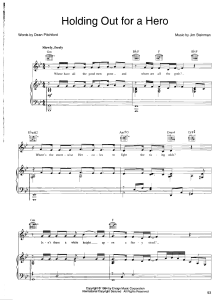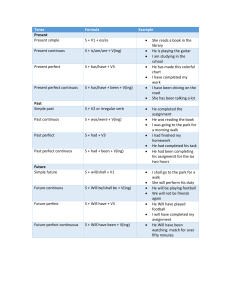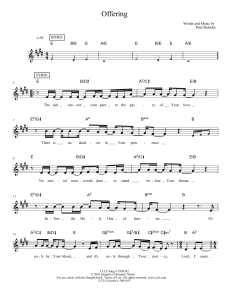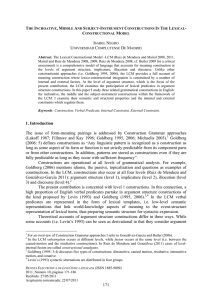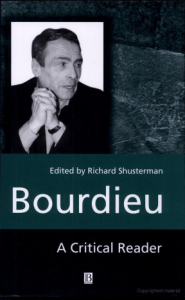The English –ing form and its equivalents in Spanish: contrast
Anuncio
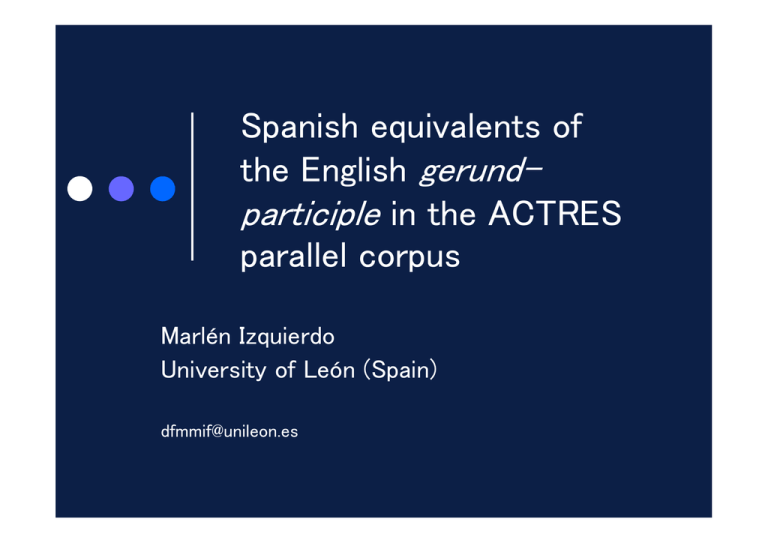
Spanish equivalents of the English gerundparticiple in the ACTRES parallel corpus Marlén Izquierdo University of León (Spain) [email protected] Outline: | The study: Object z Relevance z Objectives z Theoretical principles | Methodology | Tools z Stages (analysis + results) z Conclusions | Future research | The study | | | | English gerund-participle (-ing form) from a contrastive & translation-descriptive point of view Problem-trigger for translation into Spanish: z Multifunctional z Traditionally associated with the Spanish gerund (-ndo) • Overuse (´translationese´) Real relationship between –ing/ -ndo? Which other Spanish resources are functionally equivalent? z Set of translational options (one-to-many) z Applications: • Translator training • FLT Theoretical framework | ACTRES research group z z z z Contrastive Analysis and Descriptive Translation Studies Applied (inter)linguistics Usage-based description • Functionalism • Corpus linguistics meaning = functional equivalence: tertium comparationis for contrast and condition for translation • Qualitative study Methodology | Tools: z Linguistic corpora: • ACTRES Parallel Corpus (stages 2 & 3) • Qualitative data • CREA: control corpus (stage 4) • Quantitative study z Browser: CWB (stage 1) z Statistical package: Chi-square test (stage 4) P-ACTRES | | | | | Original AmE & BE texts & translation into Spanish (Unidirectional) 2.3 million-word written, general language Texts from 2000 up to now 3 sub-corpora: z Books (fiction [34%] & non-fiction [43%]) z Press (editorials [10%] & magazine articles [10%]) z Miscellanea [3%] Sentence-aligned & pos-tagged Stage 1: selection | CWB: | Population from P-ACTRES: 244,276 words 4,441 Parallel Concordances | Stage 2: description | | | | Original English –ing constructions (from P-ACTRES) KWIC Form meaning Four major functions: Adverbial Aspectual Characterization Referential [progressive] 1,436 1,204 1,049 752 32,3% 27,1% 23,6% 16,9% Adverbial –ing constructions Arriving in front of the protective plexiglas, Time 393 27,3 % Process 311 21,6% Getting on her hands and knees, she Accumulation 278 19,3% H-D lent me a poem called Waste Land by Eliot, advising me to read it. Result 127 8,8% …lit the new leaves on the apple trees from behind, turning them a glowing lime green, an Reason 122 8,5% They did not let him join them, preferring him to study and better himself, but the… Purpose 101 7,02% Hedging his bets, he ordered half of his men Concession 44 3,05% …instead of returning it to the king and claiming his prize, he rode over the hill … Place 29 2,08% …left on time at 2.10 p.m. […], heading west, its engine… Condition 20 1,4% I might have a chance, all being well, of being selected… Disjuncts Stance 10 0,7% …following the Kantian tradition of cosmopolitan federalism, I will underscore Conjunct Conclusion 1 0,03% Circumstantial (direction) Sophie held her breath… reached beneath her wooden… back to the Louvre perimeter… ‘In closing’, Langdon said… Aspectual –ing constructions She was wearing jeans and a white T-shirt so large that the … He had been working on the painting for almost two months… …urgently indicating that what I was being told was completely in… 553 46% Present 436 36,2% …but then you can fall off a mountain you’re climbing fore… …between hope and scepticism that is being fought inside… …that’s exactly what Mundy has been doing, but he is too polite… Future 123 10,2% What is he going to do once he is in Paris or London? How many of them do you think will be voting for Ken Lay’s best… Langdon was not going anywhere Conditional 48 3,9% I viewed his movement as if I were standing in the street, looking… …nor at Tanneke, who would be frowning because I had pushed her... Infinitive 45 3,7% He must be trying to tell me more than that.. Past Characterization by –ing constructions 47% The invading army stopped in its tracks at the sight of… Participial adjective 492 Reduced –ing relative clause 312 29,8% Two billiard balls rolling towards each other at the same speed have equal but opposite… [two billiard balls which are rolling towards each other…] Noun postmodifier 196 18,6% …he is in the process of losing his taste for Shakespeare… …more entertaining method for preserving dates and details Adjective postmodifier 49 4,7% …each of whom looked capable of tearing up oak trees… Flikschuch’s argument is worth considering in some detail… …needed to strain at creaking wooden carts to maintain.. Referential –ing constructions Catenative complement 381 50,6% Funny how his mind kept going back to that song… I found myself just staring at him in wonderment… He needs to hear someone speaking quietly to him… Prepositional verb complement 119 15,8% I thought about walking out but decided to… I accuse the general who stands besides you of stealing the other… Subject 106 14,1% Being at least half dressed would speed his getaway if… The praying stopped and cursing began. Direct Object 49 6,5% Leave the talking to me. Complement 41 5,4% German paratroops were reported fighting in Polish uniforms, assisted by ethnic Volksdeutsche dressed in distinctive… Comparative 30 4% Others 26 3,4% That is like throwing up a ball with exactly the right escape velocity… …and echoing the negating movement of his finger with a rapid shaking of his head… Stage 3: contrast | | Meaning form Recurrent translational options Translational options of -ing adverbials 40 35,7 35 30 25 20 18,2 15 10 5 0 9,5 9,2 8,2 7,9 3,2 2,7 1,6 1,5 0,9 0,6 0,7 Gerund Sub. Adverbial [nFin] Sub. Adverbial [fin] PP Simple clause Coordination Adjective Relative cl. Omission No TR NP Adverb Others Fleeing the men’s room, they moved into… Abandonando el servicio, se internaron en las sombras… …concentrated on smoking while stamping our feet to … …nos concentramos en fumar mientras pisoteábamos con fuerza el suelo… Following the first Gulf War, he went into Iraq repeatedly… Con posterioridad a la Guerra del Golfo, fue enviado repetidas veces.. Translational options of -ing aspectual constructions 60 50 47,75 40 30 29,4 20 11,8 10 2,2 1,5 1,4 0 1,07 1,07 0,7 0,6 0,6 0,5 0,4 0,2 0,2 VP [finite] Estar + G Complex VP Estar + Adj Estar + PP Clause Infinitive NP PP Adjective Passive No TR Gerund Omission Others Mundy is listening hard Mundy escucha con atención Tell me what is happening Contad lo que está ocurriendo …but they were still using orange crates for storage… … pero seguían aprovechando las cajas de naranjas para almacenar… Translational options of –ing modifiers 35 30,9 30 25 20 15 10 5 18,3 13,2 12,7 7,8 5,2 4,8 2,7 1,9 0,8 1,04 Adjective Relative cl. PP N/Adj+prep+inf. Clause NP Gerund No TR Omission Adverb Others 0 …between the talking heads, he can see the sea’s black horizon and.. …entre las cabezas parlantes, ve el horizonte negro del mar y… Among the evacuees returning from Holland was Sir Neville Bland, the… Entre los evacuados que regresaban de Holanda estaba sir Neville Bland, embajador… …isn’t even going to get to the starting line… …no va a llegar siquiera a la línea de salida Translational options of –ing referential constructions 30 25,9 25 20 16,2 15 10 5 12,9 12,3 11,8 10,1 3,7 2,2 1,9 1,2 1,6 Infinitive NP Gerund Subordination VP Simple clause PP Adjective No TR Omission Others 0 Driving a car takes up all Sasha’s attention Conducir exige a Sasha toda su atención If I didn’t have my sculpting, I don’t know if I’d be ok Si no tuviera mis esculturas, no sé si… … its serene beauty I find myself wondering why Lucy has turned not… …su serena belleza me descubro preguntándome por qué la actitud de Lucy… Stage 4: ‘translationese’ control Overuse of the Spanish Gerund? | CREA & Chi-square test | Quantitative study E.g. ‘esperando’ | instances in CREA: 523 P-ACTRES: 57 p-value: 0 [significant] instances/million CREA: 32,1/m P-ACTRES: 84,1/m Overuse: 33,9% Conclusions | Spanish G: Central equivalent: adverbial and aspectual z Marginal equivalent: characterization & referential z Functional/translation equivalence –ing & Spanish: one-to-many | Translationese in the use of the G | CA ∞ Parallel Corpora ∞ DTS | Future research PhD dissertation | Larger amount of data | Non-finite –ing constructions | Comparable-corpus-based yuxtaposition –ing/ndo prior to the contrastive-descriptive parallel-corpus-based analysis | Stage 4: qualitative extension | z Lexical analysis Comments and questions? *** Thank you!

